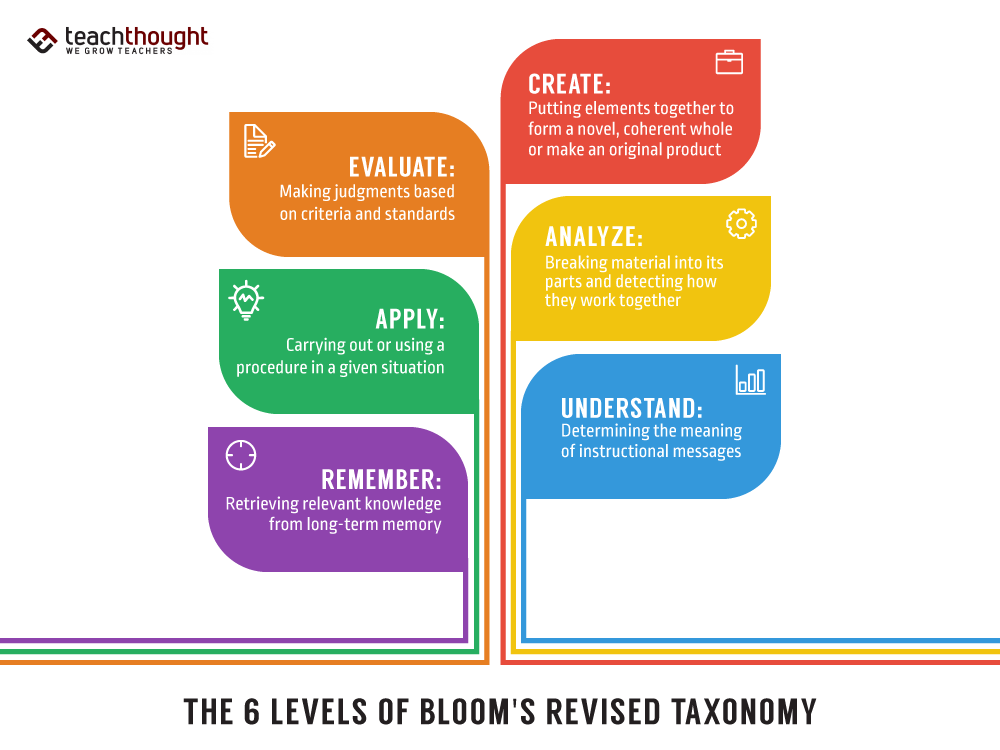What Are The Most Common Misconceptions About Bloom’s Taxonomy?

Summary: Five persistent misconceptions about Bloom’s Taxonomy with short clarifications and excerpts from the original text. Use the notes to plan tasks that match the intended level of thinking and to avoid common misreads.
Many educators know the list of levels more than the reasoning behind them. That efficiency saves time, yet it can lead to predictable errors. Below are five common misconceptions with clarifications drawn from the original taxonomy and later commentary.
1. The first two or three levels are “lower order,” and the last levels are “higher order.”
This is false. Only Knowledge is strictly recall. Comprehension requires judgment, attention to relationships, and restraint in interpretation. The terms “lower order” and “higher order” do not appear in the taxonomy.
The essential behavior in interpretation is that when given a communication the student can identify and comprehend the major ideas which are included in it as well as understand their interrelationships. This requires a nice sense of judgment and caution in reading into the document one’s own ideas and interpretations.
Classroom implication: treat Comprehension as real sense making, not rephrasing. For planning verbs by level, see Bloom’s Taxonomy Verbs. For technology rich verbs, see Bloom’s Digital Taxonomy.
2. “Application” requires hands on learning.
No. Application is about transfer to a problem that is new to the student without prompting about which abstraction to use. Hands on activities can be part of it, but they are not required.
Given a problem new to the student, he will apply the appropriate abstraction without having to be prompted as to which abstraction is correct or without having to be shown how to do it in this situation.
Design implication: build tasks that require students to choose which prior learning fits. For classroom stems aligned to each level, see Question Stems by Level.
3. All verbs listed under a level are equal or interchangeable.
No. Within levels there are sub levels that vary in cognitive demand. For example, Knowledge of terminology is simpler than Knowledge of structures or theories. Under Comprehension, Translation is simpler than Interpretation, which is simpler than Extrapolation.

Planning implication: choose verbs with care and match them to the sub level you intend. If you want a modern set of planning verbs with concise examples, see Bloom’s verbs by level.
4. The taxonomy recommends against the goal of “understanding.”
Only in the sense that the word is too broad by itself. The taxonomy helps you specify what kind of understanding you want. Translation, Interpretation, and Extrapolation represent progressively deeper forms of understanding across sub levels of Comprehension.
If it meant that the student was aware of a situation and able to describe it in terms slightly different from those originally used, this would correspond to the taxonomy category of translation. Deeper understanding would be reflected in interpretation where the student summarizes and explains.
For a clear overview page to link from here, use What Is Bloom’s Taxonomy.
5. The taxonomy is a complete and final theory.
No. The authors note limitations and call for a larger synthesis of learning theories. Later models like Webb’s Depth of Knowledge and the Revised Taxonomy extend the conversation but do not resolve every issue.
Our attempt to arrange educational behaviors from simple to complex was based on the idea that simple behaviors may become integrated to form more complex behaviors. Our evidence on this is not entirely satisfactory, but there is an unmistakable trend.
For complementary frameworks, see Alternatives to Bloom’s and classroom examples organized by level at Bloom’s Examples by Grade Level.
Why this matters
Standards documents sometimes use verbs inconsistently, which makes intended rigor unclear. Teachers can counter this by choosing precise verbs, naming sub levels, and designing for transfer rather than recall. If you are planning technology rich tasks, map your verbs against the digital list on Bloom’s Digital Taxonomy and avoid low level digital busywork.
Works Cited
- Bloom, B. S., Engelhart, M. D., Furst, E. J., Hill, W. H., & Krathwohl, D. R. (1956). Taxonomy of Educational Objectives: The Classification of Educational Goals. Handbook I: Cognitive Domain. New York: David McKay Company.
- Anderson, L. W., & Krathwohl, D. R. (Eds.). (2001). A Taxonomy for Learning, Teaching, and Assessing: A Revision of Bloom’s Taxonomy of Educational Objectives. New York: Longman.
- Wiggins, G., & McTighe, J. Various writings on understanding, design, and assessment. See related frameworks for context.